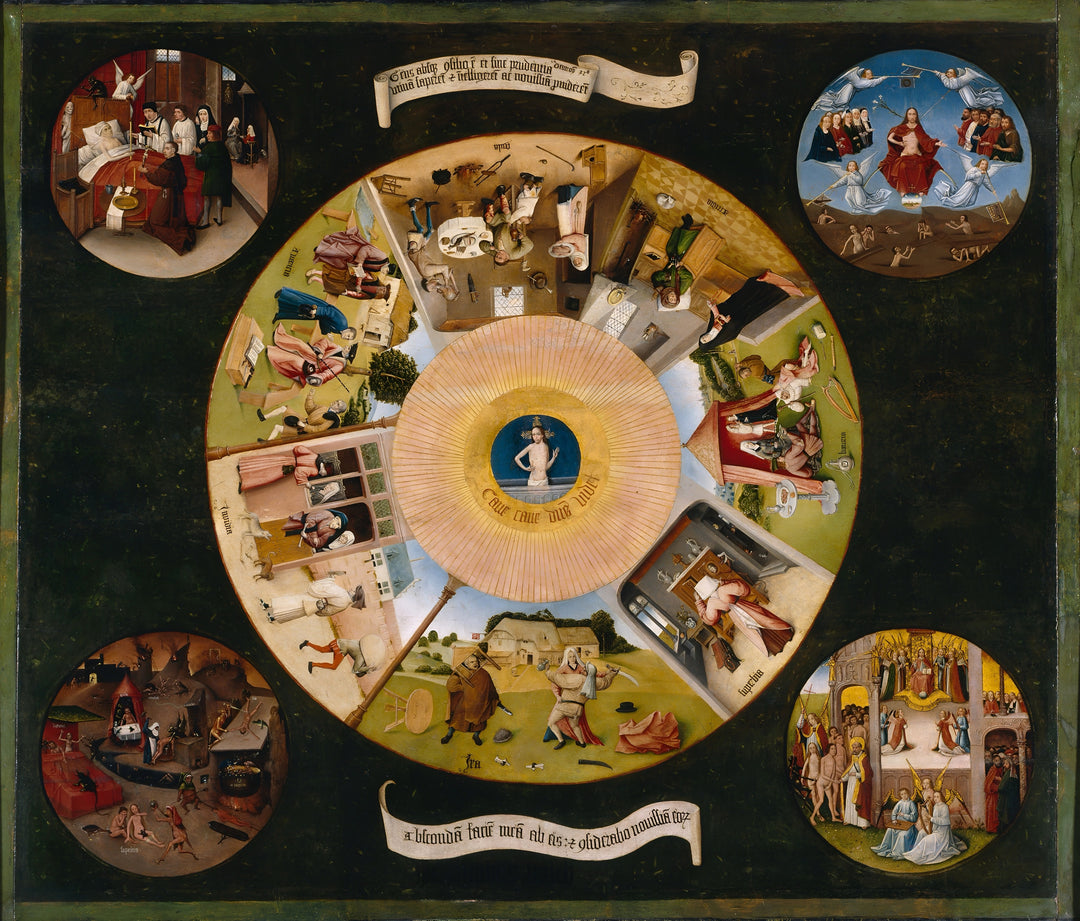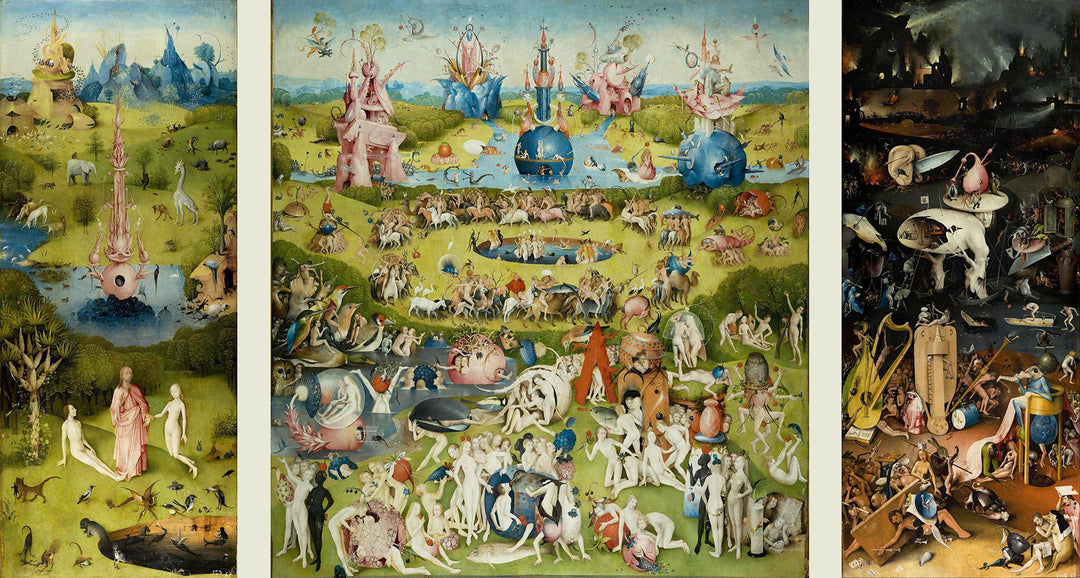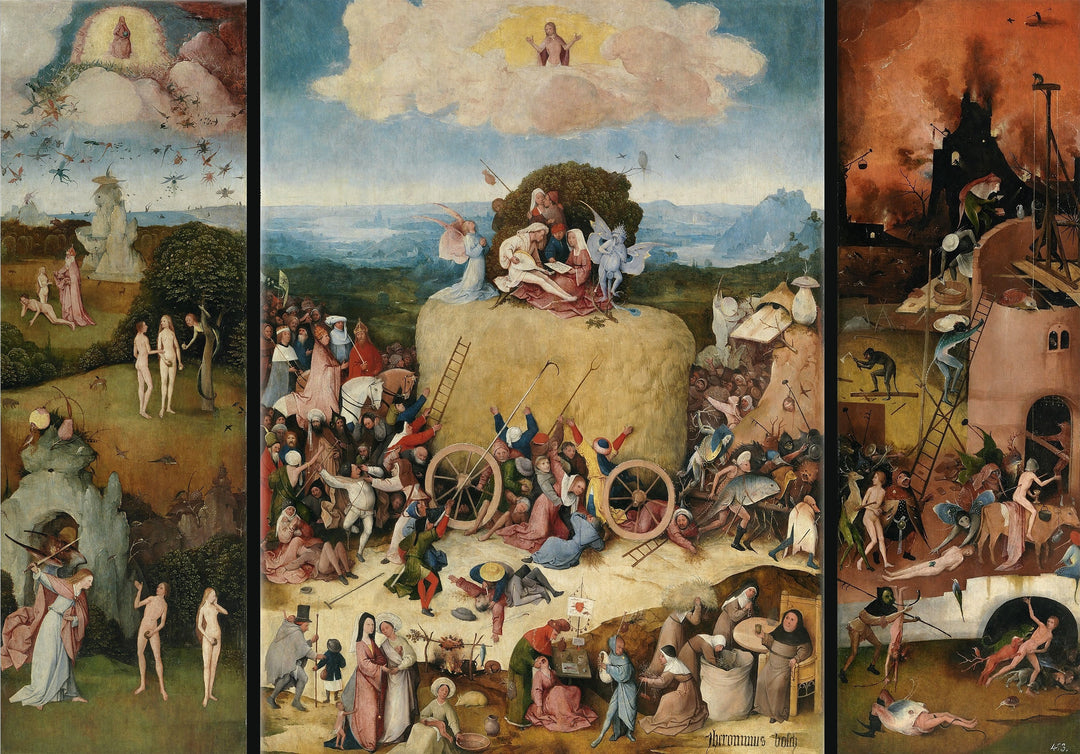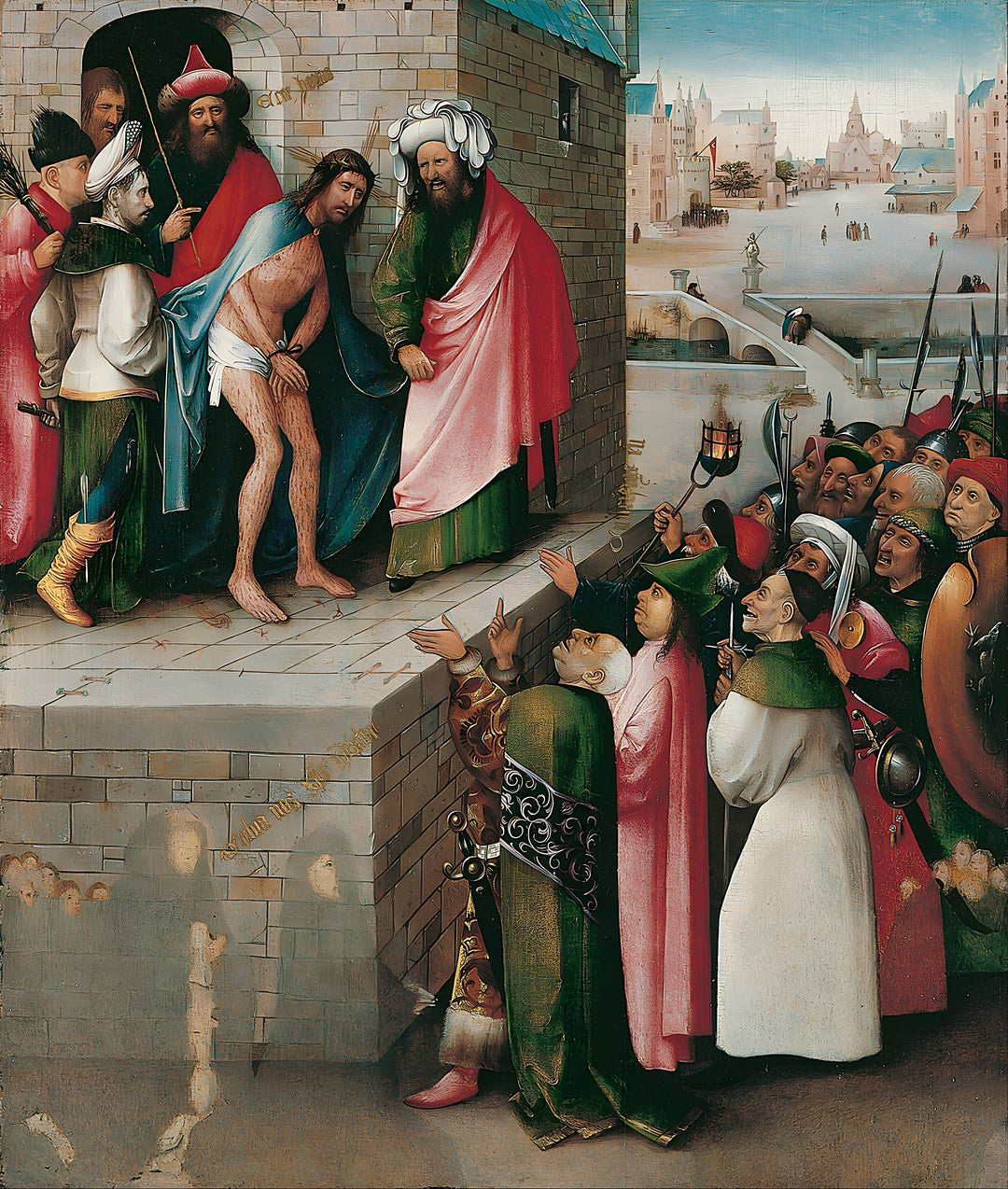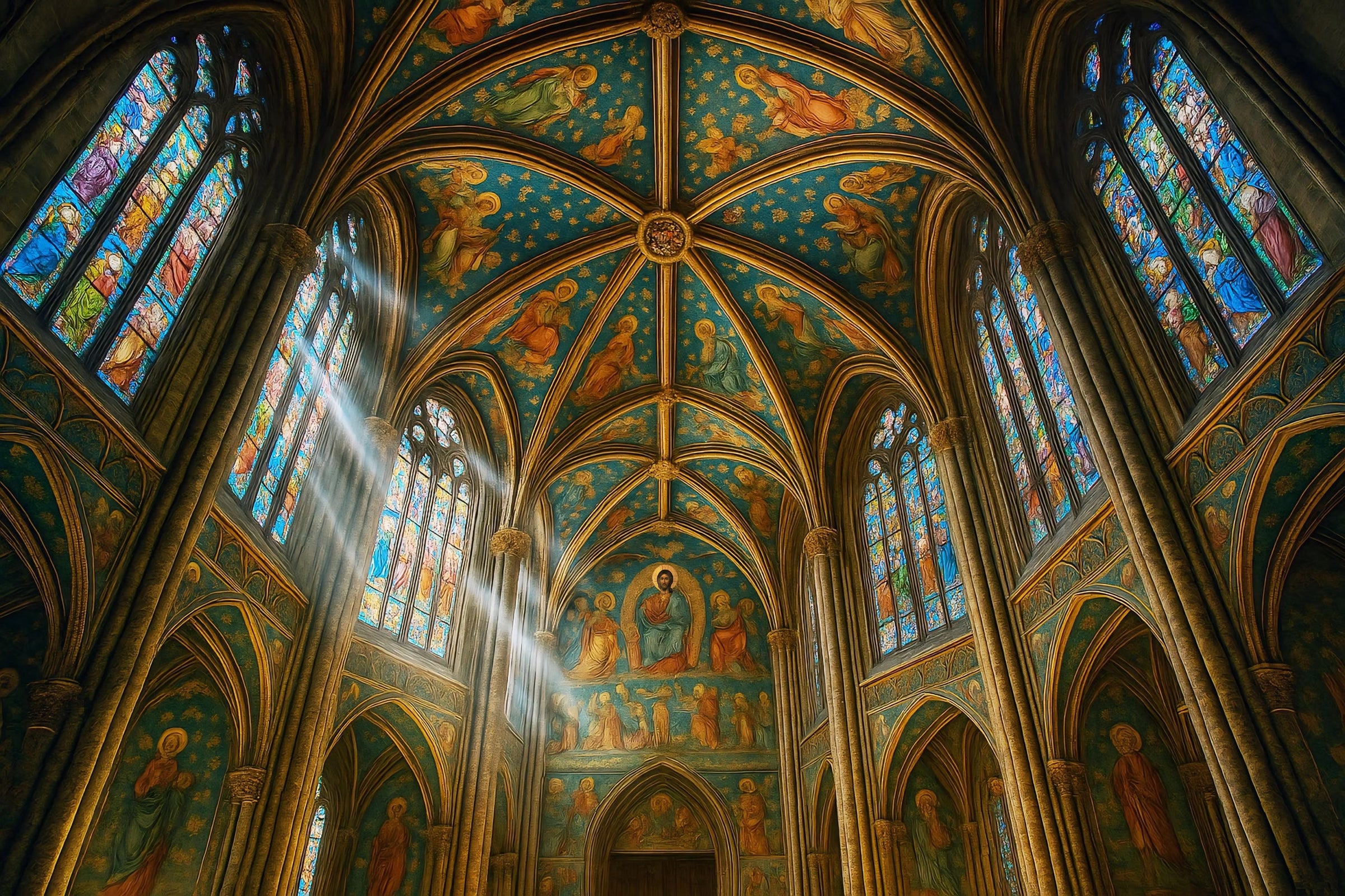
Gothic Art
Gothic Art emerged as a profound transformation of the European visual and architectural language from the 12th century onward, displacing the rigidity of the Romanesque through a determined pursuit of verticality, light, and spiritual transcendence. Gothic cathedrals, with their pointed arches, colossal stained glass windows, and ribbed vaults, not only solved structural challenges but also inaugurated an aesthetic that sought to bring humanity closer to the divine through awe. This architecture, far from being somber as Voltaire sought to make us believe, was a true hymn to light: spaces were flooded with color through stained glass, which not only illuminated but also narrated sacred stories about the relationship between humankind and God through glass. This impulse to elevate both gaze and spirit was accompanied by an unprecedented intellectual flourishing in the Middle Ages, with the founding of the first universities in Salamanca, Bologna, and Oxford, the development of scholasticism, and a profound integration of faith and reason.
Far from representing a dark age, Gothic Art revealed a progressive humanization of the image, particularly in painting. In its early stages, known as Linear or Franco-Gothic, schematic forms, marked contours, and golden backgrounds prevailed, focusing more on symbolic meaning than on realism. As the 14th century advanced (especially in Italy), a more narrative and emotional painting emerged, with figures such as Giotto introducing spatial depth, volume, and credible human gestures: this phase is known as Italianate or Trecento Gothic. Finally, in the 15th century, Gothic painting reached its greatest complexity with the International and Flemish Gothic styles, where artists such as Jan van Eyck and Hieronymus Bosch achieved extreme detail, innovative lighting effects, and symbolic scenes combining the everyday with the fantastic. These three stages marked an evolution toward the human, the narrative, and the technical, anticipating many of the achievements of the Renaissance.
Three painters powerfully illustrate this visual richness: Giotto di Bondone, for his narrative and spatial revolution; Fra Angelico, for his gentle and luminous mysticism; and Hieronymus Bosch, who carried medieval iconography into the realm of imagination, creating compositions overflowing with symbolism, morality, and mystery. This development in painting is directly related to the changes in architecture and urban life of the time—a world increasingly literate, sensitive to human emotion, and attuned to the complexities of the soul. The minute detail, the emergence of domestic interiors, and the depiction of realistic landscapes in Flemish Gothic art are evidence of an art deeply rooted in the earthly, without renouncing the sacred. Gothic art was, in essence, a visual language that reflected a society in transformation.
Nevertheless, the idea that the Gothic period was “dark” did not originate in its own time but was imposed centuries later by Renaissance intellectuals. Giorgio Vasari, in his effort to restore the Greco-Roman classical canon, disparaged medieval art by calling it “Gothic,” in reference to the Goths, considered barbarians. This distorted view dominated for centuries, obscuring the true greatness of a period that transformed art, technique, and European spirituality. It was not until the Romanticism of the 19th century that Gothic art was rehabilitated and valued for its expressiveness and symbolic depth. The modern architect Antoni Gaudí (1852–1926) in some way revisited this aesthetic in the "Basílica i Temple Expiatori de la Sagrada Família", particularly in its spires, pointed arches, and verticality. His work recalls the catechetical message found in the famous triptychs The Haywain Triptych and The Garden of Earthly Delights, exploring in them the excesses and ruins of the modern world. Far from having disappeared, the Gothic continues to pulse in contemporary visual imagination as a way of perceiving the sacred, the tragic, and the sublime in a single gesture.
